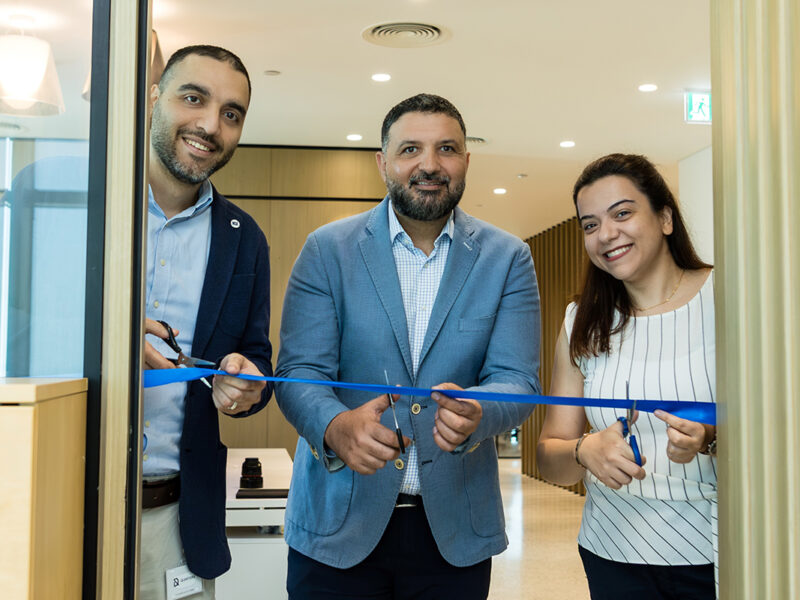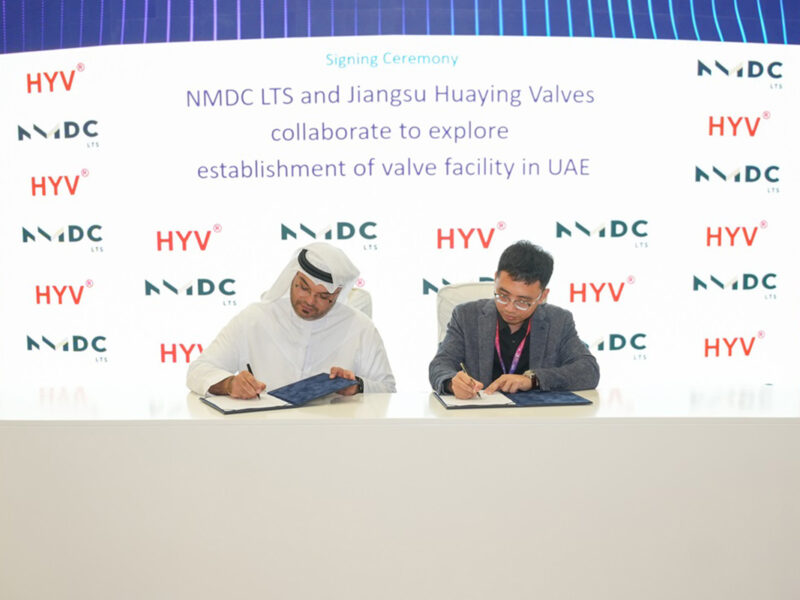Scientists have found a way to produce artificial rain in the UAE. It’s supposed to reduce air pollution and help agriculture. But does it work?
Richard Partridge had been in Dubai for five years. He thought he had seen everything – crazy driving, crazy property prices and crazy people. But crazy weather? “It was May and it was raining in Dubai. We thought the world was coming to an end,” he says.
Partridge better get used to it. More used to 120F heat, with rarely more than two days of rainfall a year, the UAE is now trying to solve its water shortage by making it rain almost everyday in summer.
The country that gave us The World, The Palm and The Burj Dubai is now embarking on what could be its most ambitious ever project, with millions being invested worldwide in the technique, which causes artificial rainfall that otherwise would not have occurred.
The UAE has been using the technique known as ‘cloud seeding’ since 2001. The National Centre for Meteorology and Seismology (NCMS), which is based in Abu Dhabi but monitors the entire UAE, claims it can induce up to 10 per cent more rainfall in existing clouds by using the technology.
So how does it work? “We watch natural cloud formation using a radar and satellite pictures”, explains head of forecasting Sufian Farrah of the NCMS. “When the scientists spot a suitable cloud, we send a plane to the base of it.
“The plane fires a flare filled with chemicals to a place where the cloud has a good updraft and the chemical salts work as an attraction to water vapor in the cloud. Through this, the tiny water droplets become bigger and fall down. Twenty minutes after we sent the plane up it began raining.”
A suitable cloud is determined by meteorologists after radars provide information about its structure and physical quantities. The radars detect water, vapor and ice particles present in the cloud as well as wind and speed directions that affect them. The data is then fed into a model that predicts the impact of cloud seeding.
The NCMS is also informed when a cloud “dies down”. According to Farrah, this occurs when heating takes place instead of cooling in the cloud. A hot breeze can cause it to slowly dissipate making it too late to conduct a rain enhancement experiment.
The cloud seeding technique is used up to four times a week in summer in the more rural areas of the UAE, says Farrah. “The most suitable place for it is often the east of the emirates – near Al Ain and Fujairah in particular – because of its mountainous areas.”
Cloud formation occurs when moist air from the Arabian Sea or the Gulf of Oman is pushed from a lower to an upper level. This usually happens after a collision with mountains or a breeze from the Southeastern direction.
“During summer the clouds are usually far from the city areas of Dubai and Abu Dhabi”, says Farrah. “It’s therefore not possible to induce rain. Sometimes you have clouds moving from the East to the West. But this happens no more than five times [in that season]. That’s why we do cloud seeding over these areas during springtime.
The artificial rain project was started in 2001 by the Department of Atmospheric Studies, which later became the NCMS. It was created in association with the US National Centre for Atmospheric Research (NCAR), the American Space Agency NASA and the University of the Witwatersrand in South Africa.
Efforts to generate an artificial source of water were greatly encouraged in 2003 by His Highness Sheikh Mansour bin Zayed Al Nahyan, the UAE’s minister of Presidential Affairs, when he announced a prize of US$600,000 for the best study on artificial rain.
Other Gulf countries are now following the UAE’s lead in testing the cloud seeding technique. Qatar brought in a delegation of UAE water experts in 2006 for advice and in the same year, Saudi Arabia started a cloud physics program according to Saleh Al-Shehri, director of the National Center of Meteorology and Environment (NCME) in Saudi Arabia.
“We began researching and studying cloud physics in order to get rid of our water scarcity and shortage,” says Al-Shehri. “Water resources such as renewable groundwater, desalination, and reclaimed waste water are already insufficient to meet expected demand.”
The NCME runs cloud seeding operations almost daily, says Al-Shehri, “especially at this time of the year when clouds frequently appear over our southwestern-highlands.”
The centre’s field study is planned to take another two years.
Cloud seeding technology may have been practised frequently around the world since the beginning of this decade, but the concept has been around for much longer. It was invented in 1946 by Dr. Vincent J. Shaefer in New York.
Today more than 40 countries are using the technique. And it can be used to cause the reverse effect. During the recent Beijing Olympics, China experimented with cloud seeding to reduce rain rather than induce it.Its Meteorological Administration dispersed clouds by firing rockets with chemicals into the sky, possibly contributing to a rain-free opening ceremony.
Russia uses the process to reduce the size of hail stones that would otherwise destroy vegetation. One hail stone, which can be up to the size of a small orange, dissipates into around twenty pieces after chemicals are added to it.
The chemicals increase the rate of condensation of extremely cold water droplets into hail, thereby reducing the size of the stones.
Rain enhancement, on the other hand, is practised in countries that experience frequent droughts. Australia has used the technology since 1947 and is trying to increase its water reservoirs in order to generate more hydroelectricity.
Instead of using planes to sprinkle clouds with chemicals, however, scientists place burners on the top of mountainous areas. The mini-furnaces use ethanol to burn the chemical silver iodide, which is then released into the atmosphere and quickly ascends into the clouds situated just above the mountains.
Although the cloud seeding technique is becoming widely popular, it is still in its experimental phase, says Gary Jones, CEO of eWater Cooperative Research Centre in Australia.
Jones says there are still “sensitivities” in areas of the technology. “Some people don’t believe the technology really works,” he explains. “What has never been proven in a proper trial is whether you can induce rain on a large scale – in a significant region or a watershed for example.
“Water utility companies who run the tests in Australia have been claiming a 10 to 30 percent increase of amount of rainfall, but that’s never statistically been proven.”
Another sensitive issue is that it is not entirely clear whether the chemicals used in cloud seeding cause harm to the environment. Silver iodide is a frequently used chemical in the process, but it is also a toxic metal, which, on the face of it, is hardly ideal.
Although the amounts of it used are “very little,” Jones says there is a possible risk of pollution in soils accumulating. “That might be dangerous when you look at the situation after 50 or 100 years.”
Farrah of the NCMS in Abu Dhabi disagrees.
“It’s absolutely not dangerous for our environment. The amount of pollutant chemicals we add is less than 0.01 microgram per litre. The limit for it possibly becoming harmful is 50 mg per litre,” he says.
In the UAE, silver iodide is only used when the atmosphere is very cold. According to the NCMS, around 30 percent of its tests are done on so-called ‘cold’ clouds, where it is typically around minus 5 degrees Celsius.
The chemical process is different from the one described above which is used on ‘warm’ clouds – those that are usually between 15-17 degrees Celsius.
When seeding ‘cold’ clouds, raindrops are formed by making silver iodide ice crystals grow. They absorb water vapor, found around cold droplets, which were already present in the cloud.
The vapor causes the crystals to become liquid under the freezing level, thereby creating rain.
The possible risk of using silver iodide is certainly not the only challenge scientists face when experimenting with rain enhancement globally. Adding to the problem is the limited amount of suitable clouds that can be used for testing.
Meteorology centres cannot create clouds, or induce rain from clouds, that do not have the relevant characteristics.
“The problem in a lot of Middle Eastern countries is that the classic way to get clouds is [only after] formation over mountain ranges”, explains Jones. “A group of Russian scientists has been traveling around the world claiming they can make clouds, but no one believed a word of it.”
Farrah believes the lack of clouds is the biggest problem the scientists face.
“No clouds, no seeding”, he says matter-of-factly. “But as long as we can, we will continue searching, and searching for ways to enhance the rain.”








